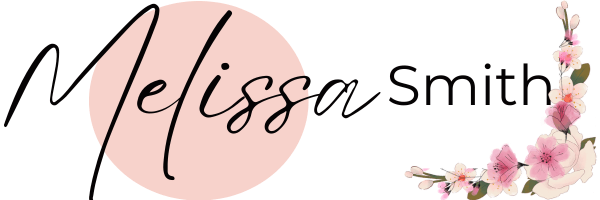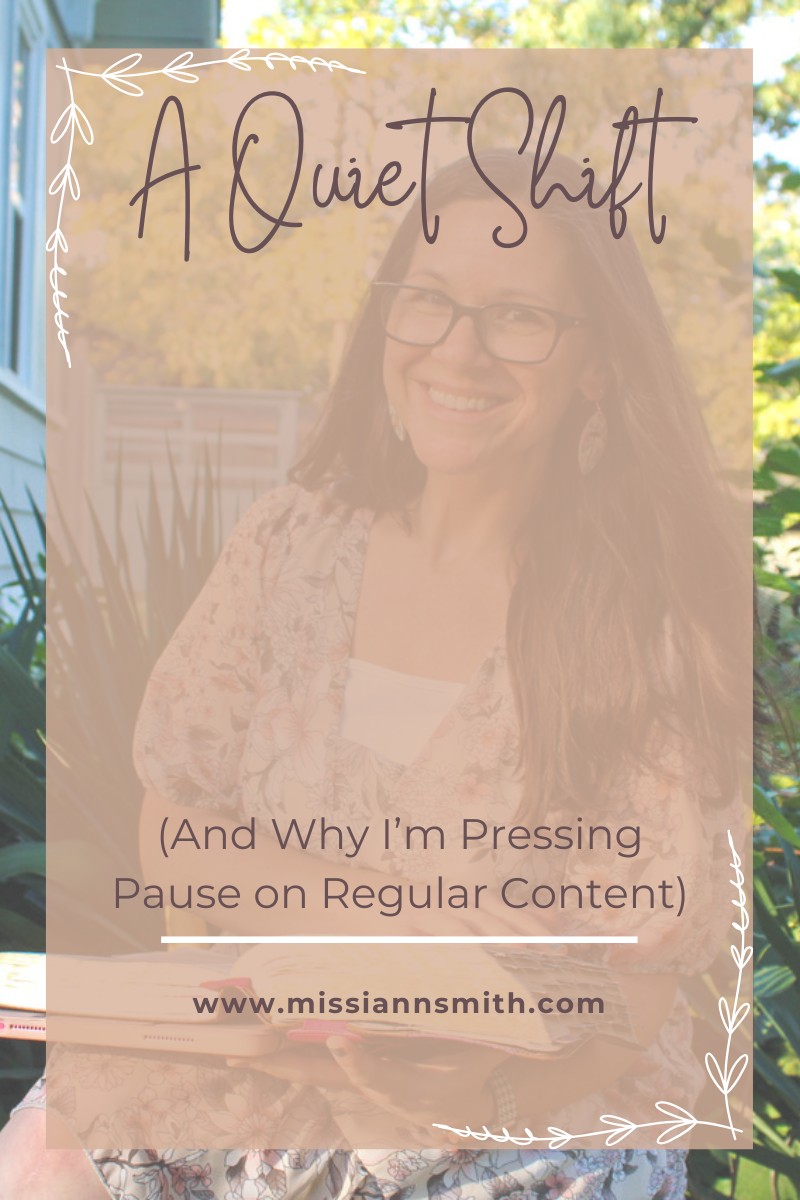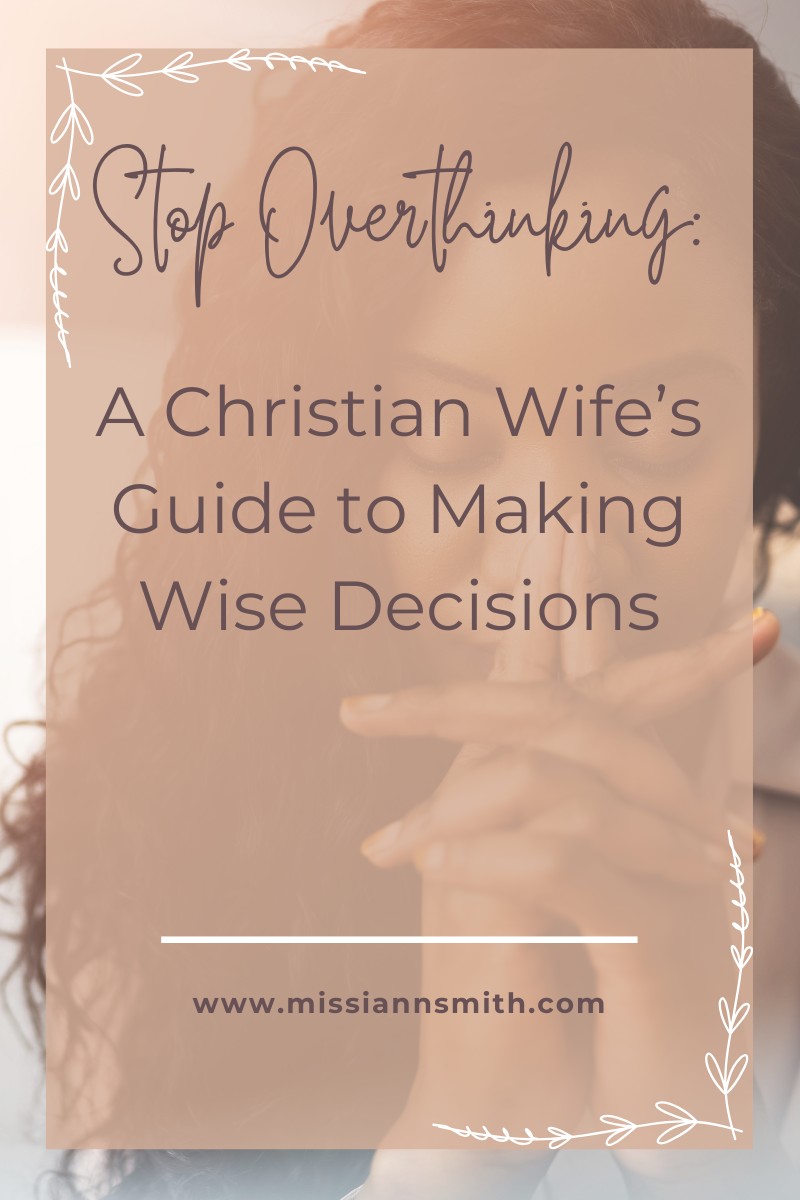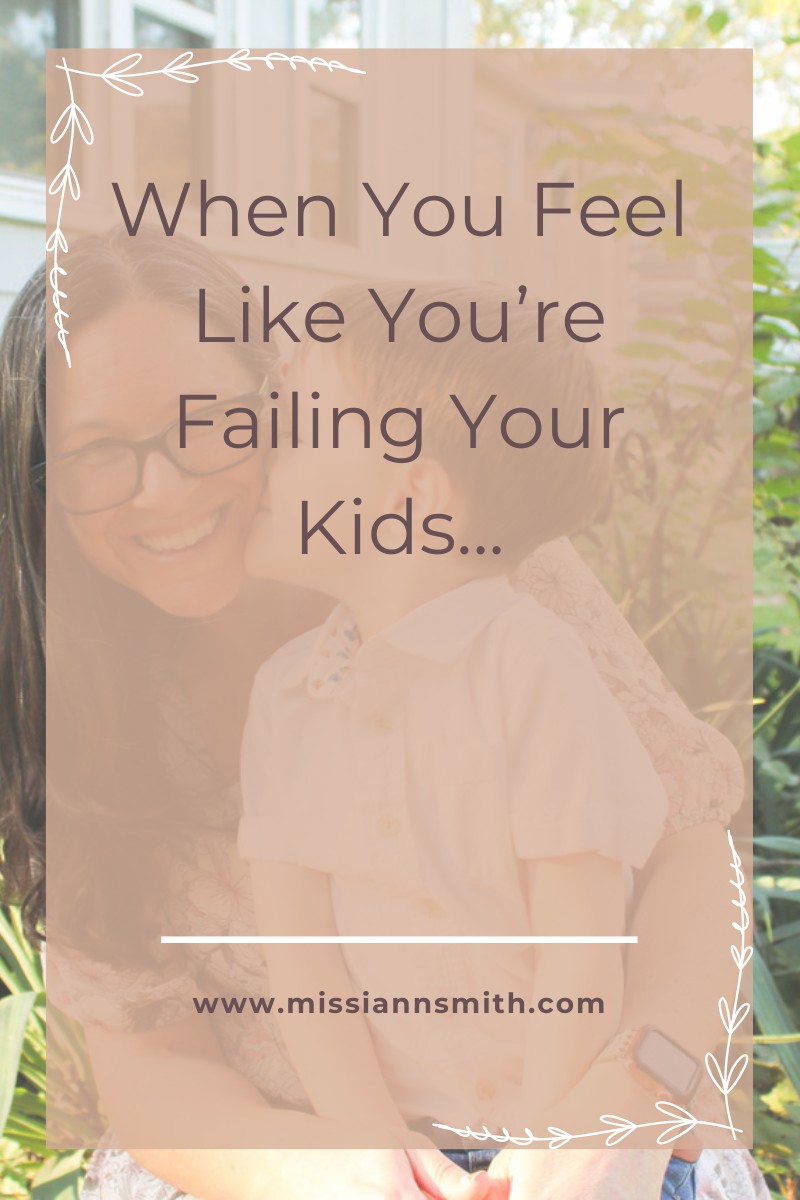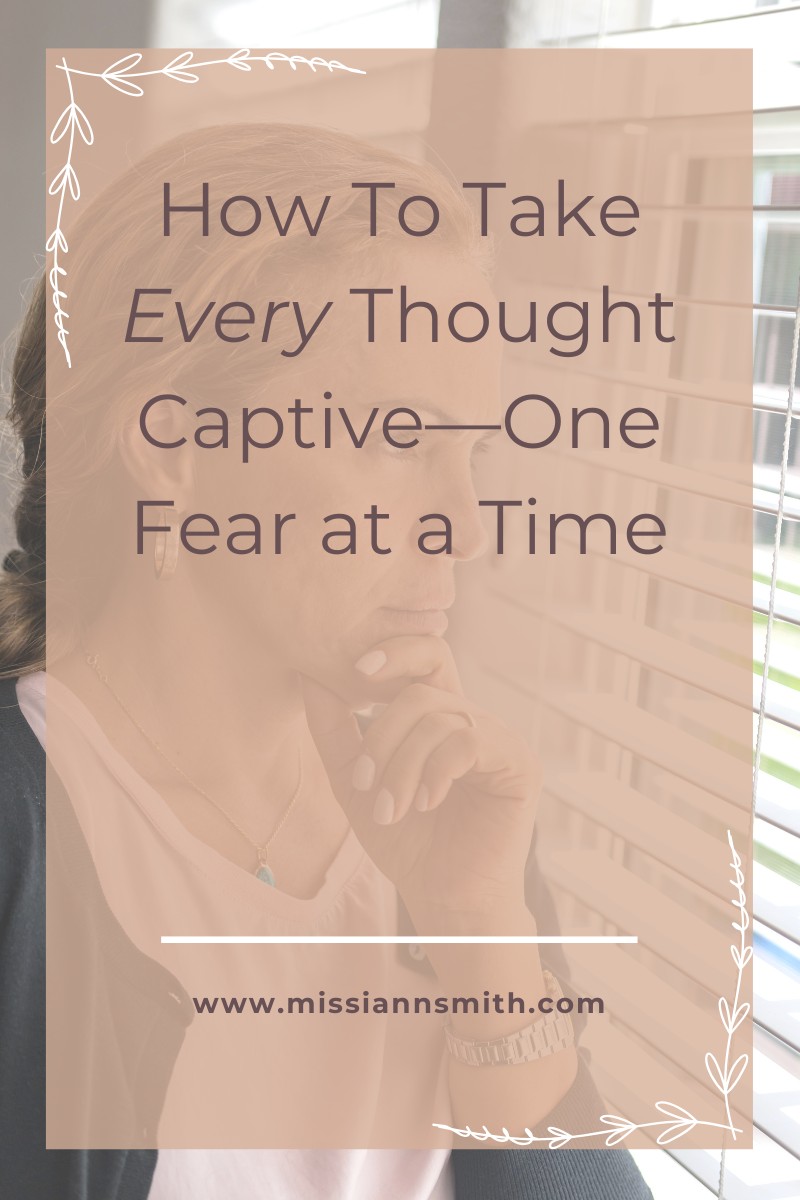
One of the most sacred and silent fears I hear from women is:
“What if my husband never becomes the spiritual leader I pray for?”
That ache runs deep.
It’s often whispered through tears, tucked inside prayer journals, or carried silently in conversations with God.
You long to see your husband flourish in Christ.
You dream of him leading your family with wisdom and strength.
And when it doesn’t happen… it’s easy to drift toward control, resentment, or quiet despair.
But sweet friend — Scripture speaks straight into this place.
🕊 A Word From the Word
1 Peter 3:1–2 (ESV) says:
“Likewise, wives, be subject to your own husbands, so that even if some do not obey the word,
they may be won without a word by the conduct of their wives —
when they see your respectful and pure conduct.”
This isn’t a call to silence.
The Greek meaning of "without a word" here means THE Word. It means don't preach Scripture at your husband when he's already not inclined to obey it.
It does not mean to ignore or enable sin. It doesn't mean to hide your concerns, fears, or wisdom.
What it does mean is to use strength in surrender.
It’s not about pretending or performing — it’s about trusting that God is at work, even when you can’t see it.
🙏 Truth You Need to Know
Here’s what I remind women often — and I want you to hear it too:
- Your husband’s sanctification is not your responsibility.
But your response is. - Your role is not to lead him spiritually.
Your role is to honor God faithfully — and let the aroma of Christ be what shapes your home. - You’re not powerless in this.
But your power comes from prayer, not pressure.
Let’s pause here for a moment of reflection. Ask yourself:
- Have I confused spiritual leadership with spiritual performance?
- Am I trying to change him in my timing — instead of trusting God’s?
- Where am I withholding respect because I’m waiting for results?
- IMPORTANT NOTE: As a wife, you are called to respect your husband unconditionally - just as your husband is called to love you unconditionally. Withholding respect until he "earns" it is directly disobeying God's instructions. (Ephesians 5:33)
❤️ What Obedience Looks Like
Here are three areas the Lord may be inviting you to walk in faith:
1. Respect without manipulation.
Are your words building him up — or are you tearing him down quietly in your heart?
“She does him good, and not harm, all the days of her life.” — Proverbs 31:12
2. Prayer without condition.
Are you praying for him every day — or only when you’re upset or disappointed?
“Continue steadfastly in prayer, being watchful in it with thanksgiving.” — Colossians 4:2
3. Trust without striving.
Are you trying to be the Holy Spirit — or letting God be God?
“The Lord takes pleasure in those who fear him, in those who hope in his steadfast love.” — Psalm 147:11
✍️ A Gentle Action Step
Let’s take the pressure off and anchor ourselves in prayer.
Today, write down three prayers for your husband.
Not things to fix. Not character traits to force.
But areas where you’re asking God to move.
Then ask yourself:
- What would it look like to trust God with no deadline?
- Can I worship while I wait?
- Can I choose peace even when the story doesn’t look how I hoped?
✨ A Loving Warning: Don’t Wait to Rejoice
There’s one more thing I need to say — gently, but clearly. I learned this the hard way, and I want to spare you some pain.
If your joy is on hold until your husband leads…
If your peace depends on your picture-perfect marriage…
If your heart aches more over his stagnancy than it delights in Christ’s sufficiency…
If your peace depends on your picture-perfect marriage…
If your heart aches more over his stagnancy than it delights in Christ’s sufficiency…
Then it may be time to ask:
Have I made my husband, or my dream of biblical marriage, an idol?
We don’t usually call it that.
It can look like longing. Grief. Disappointment.
But if you believe you can’t be whole, fulfilled, or deeply joyful without him leading spiritually the way you believe he should…
Then you're saying Jesus isn’t enough.
“Whom have I in heaven but you?
And there is nothing on earth that I desire besides you.
My flesh and my heart may fail,
but God is the strength of my heart and my portion forever.” — Psalm 73:25–26
Marriage is good.
A spiritually mature husband is beautiful.
But he was never meant to be your Savior. And it's unfair to put that expectation on him.
Your fulfillment, purpose, and security were never designed to rest on the shoulders of a man — even a godly one.
That weight belongs only to Christ.
And the good news?
He can carry it.
So let your first love be Jesus.
Let your joy come not from what could be — but from what already is.
Let your worship rise even if your circumstances don’t.
You are known.
You are loved.
You are held.
You are loved.
You are held.
Right here. Right now.
🕯 Final Word
Sweet friend, your hope is not in your husband’s growth.
It’s in the unshakable, all-knowing, always-moving heart of God.
He sees.
He hears.
He’s not slow to act — He’s working in ways you may never fully understand this side of heaven.
He hears.
He’s not slow to act — He’s working in ways you may never fully understand this side of heaven.
“He who calls you is faithful; he will surely do it.” — 1 Thessalonians 5:24
So keep planting seeds of faith.
Keep showing up with quiet strength.
And remember: You don’t need a perfect marriage to live a faithful life.
Jesus is enough. And He is with you.

Let’s be honest…
Home doesn’t always feel like the peaceful haven we imagined when we first got married, or when our first baby was born.
Some days it’s loud. Messy. Heavy.
You’re trying to get dinner on the table while someone’s yelling about socks (or poop if you're a boy mom), and suddenly the idea of a “Christ-centered home” feels more like a distant dream than something you can actually live out..
But here’s what I want you to know:
Jesus doesn’t wait for quiet to enter. He comes right into the noise.
And when you start to intentionally invite Him in, even in small ways—
The atmosphere shifts.
The atmosphere shifts.
So what does a Christ-centered atmosphere actually look like?
It’s not about fresh flowers on the table and a diffuser going (though those things are lovely - we do have a diffuser running every day but my cat eats fresh flowers).
It’s not even about perfect obedience or chore charts with Scripture verses.
At its core, a Christ-centered home is one where:
- God’s Word is known and spoken—regularly, not perfectly
- Prayer is part of real, everyday life, not just a bedtime routine
- Grace is given… and often given again
- Repentance is modeled, not hidden
- Love leads the room—even when emotions are high
Paul said it this way:
“Let the peace of Christ rule in your hearts…
Let the word of Christ dwell in you richly.”
— Colossians 3:15–16
And I love that he didn’t say when the kids are cooperating or once everyone’s emotionally regulated.
He just said: let Him rule. Let Him dwell.
5 Ways to Shift the Atmosphere—Without Overhauling Your Life
You don’t need a full schedule overhaul or a family-wide transformation plan.
Small shifts, repeated over time, will do more than one big “spiritual reset” ever could.
Here are five places you could start today:
1. Play worship in the background
When you fill your heart with the truths of God's word, with praise of Him, worship of Him, and gratitude for Him, your heart softens.
And when your heart softens, so does the tone of the whole house.
It doesn’t have to be loud. Just let truth start filling the quiet moments again.
Often, I will pull up a YouTube live stream channel that just has instrumental hymns playing, and I leave it on throughout the day.
2. Put Scripture where you’ll see it
A sticky note on the bathroom mirror. A verse on the fridge.
Or my personal favorite, wall art from Hobby Lobby. 😊
One mom told me her daughter now puts up her own verses after watching her do it.
That’s the fruit of consistency, not perfection.
3. Pray out loud in real-time
It doesn’t have to be deep or long.
It doesn't have to be eloquent or worded perfectly.
Just—“Jesus, help us have peace right now.” Or “Lord, thank You for this moment.” Or "Father, protect the people that ambulance/fire truck is going to help."
These small moments teach your kids Who you run to.
4. Model repentance
One of the most powerful things I’ve ever done as a mom is look my child in the eye and say, “I was wrong. I’m sorry.”
Repentance doesn’t weaken your authority—it strengthens their respect.
5. Speak life on purpose
When tension rises, speak God’s Word out loud into that room.
Even if it’s just you whispering it under your breath while folding towels.
“Life and death are in the power of the tongue…”
— Proverbs 18:21
You’re setting the spiritual temperature, whether you mean to or not.
A Few Questions to Gently Consider
Not to bring shame, but rather clarity.
- What’s being talked about the most in our home?
- What’s playing in the background: news, music, noise, silence?
- What would someone feel if they walked through our front door?
You don’t need a perfect answer. Just an honest one.
Because when Christ is centered, peace begins to grow—even if it’s slow.
Verses to Carry Into the Chaos
🕊 Romans 12:18
“If possible, so far as it depends on you, live peaceably with all.”
“If possible, so far as it depends on you, live peaceably with all.”
🕊 Philippians 4:7
“And the peace of God… will guard your hearts and minds in Christ Jesus.”
“And the peace of God… will guard your hearts and minds in Christ Jesus.”
🕊 Proverbs 24:3–4
“By wisdom a house is built… by knowledge its rooms are filled with rare and beautiful treasures.”
“By wisdom a house is built… by knowledge its rooms are filled with rare and beautiful treasures.”
Last Thought, Sweet Friend
You’re not failing if your house feels tense right now. Let's be real...sometimes you do all you can and the tension remains.
You’re not behind spiritually.
And you don’t need to “try harder” to make your home holy.
You just need to keep building—with Jesus at the center.
One verse. One prayer. One act of humility at a time.
Start small. Start again if you need to.
Let Christ fill the chaos.
That’s where peace begins.
✨ Want help getting started?
If you’re not sure what to pray or where to begin…
Grab your free copy of 30 Scriptures to Pray Over Your Home and let God’s Word lead the way.
📩 Download it here!
Grab your free copy of 30 Scriptures to Pray Over Your Home and let God’s Word lead the way.
📩 Download it here!
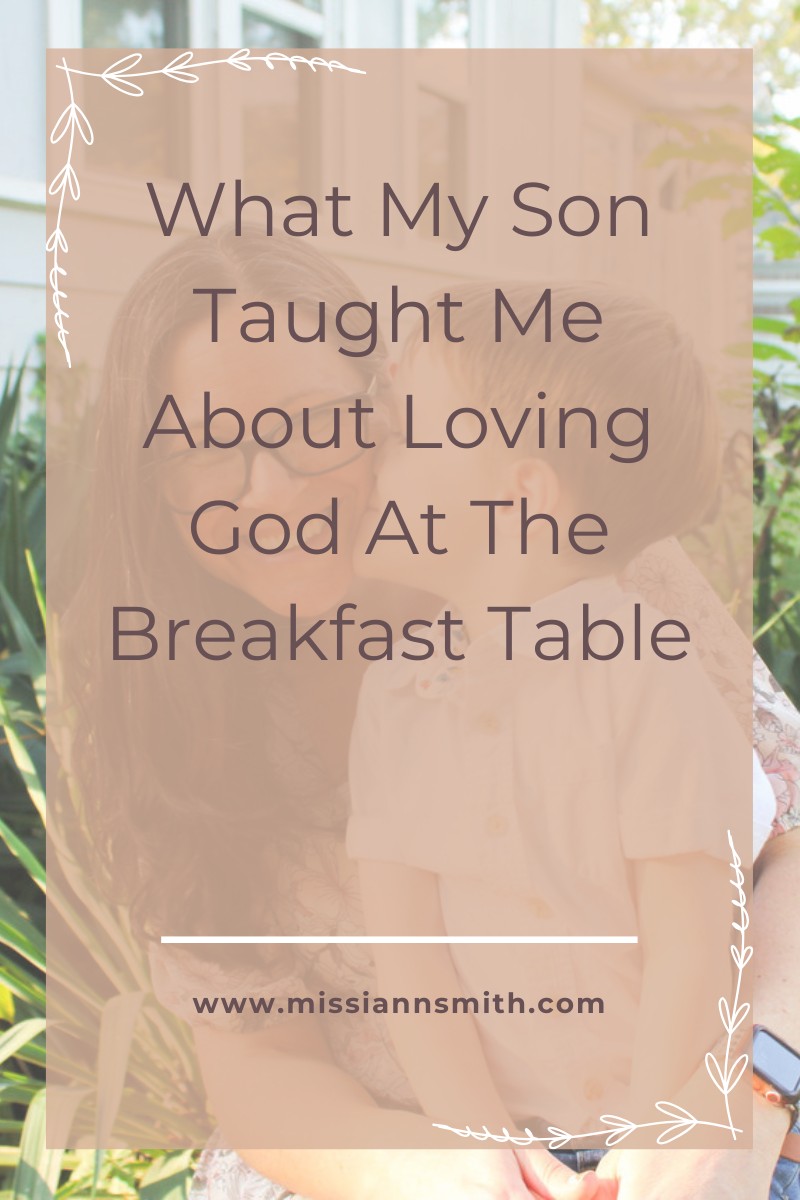
The other morning, my 4-year-old and I were reading from his Early Reader’s Bible.
(Actually, he was reading, I was listening.)
We got to the question: “How can you show love to God?”
Without missing a beat, he said,
“Um...sing songs to Him. And read this book!”
“Um...sing songs to Him. And read this book!”
This book—the Bible he had just been reading to me.
His answer stopped me. Not just because it was insightful (which it was!), but because it reminded me that our simple morning rhythm—Bible and breakfast—is already shaping how he sees God.
And that’s what traditions do.
🟣 Family traditions will shape our kids — the question is, how?
Let’s be real: not all traditions are intentional.
Some we inherited without thinking. Others just sort of… happened.
But whether we choose them or not, traditions teach our kids what matters to us.
They teach:
→ What we prioritize
→ What we make time for
→ What we keep coming back to — even when life is busy
→ What we prioritize
→ What we make time for
→ What we keep coming back to — even when life is busy
When we slow down and ask, “What are we actually passing on here?” — something shifts.
🟣 A biblically rooted tradition is more than a memory
In the Old Testament, God didn’t just suggest feasts and festivals as something fun to do.
He commanded them as a way to remember.
“You shall remember that you were a slave in Egypt. And you shall be careful to observe these statutes.”
— Deuteronomy 16:12 (ESV)
In other words, God knew we needed regular rhythms to help us remember what He’s done.
Traditions that are truly biblical don’t just feel good or look spiritual — they anchor us in truth.
🟣 Ideas for Traditions That Keep the Word at the Center
Here are a few simple rhythms that can help your family build habits of remembrance:
1. “Verse of the Month” at the Dinner Table
Pick one Scripture to memorize and talk about all month.
Let it shape your dinner convos, quiz each other, and reflect on how you see it in real life.
Let it shape your dinner convos, quiz each other, and reflect on how you see it in real life.
2. Speak a Blessing on Birthdays
More than cake and gifts—make birthdays a moment of spoken truth.
Pray over each child or spouse. Speak a Scripture aloud. Write it in a card they can keep.
Pray over each child or spouse. Speak a Scripture aloud. Write it in a card they can keep.
3. “Scripture Sunday” Reset
One mom shared that every Sunday after lunch, her family reads a Psalm together.
It’s short, simple, and has become their weekly “spiritual reset.”
It’s short, simple, and has become their weekly “spiritual reset.”
4. Holiday Anchors
Instead of just decor or gifts, use holidays as built-in discipleship moments:
- Easter → Read the resurrection account
- Thanksgiving → Share a verse of gratitude
- Christmas → Trace Jesus’ lineage and fulfilled prophecies
5. Sabbath Start or Sunday Slowdown
Light a candle. Read one verse. Pause before the week begins.
Let your kids see you set the tone with God’s Word—even if it’s only 5 minutes.
None of this needs to be big or complicated.
They just need to be repeatable — and rooted in truth.
🟣 You’re not just creating memories. You’re planting anchors.
Even if it seems like your kids aren’t paying attention...
Even if they groan or wiggle or seem “over it”...
These rhythms are doing deep, quiet work.
You’re showing them that:
→ God’s Word matters
→ His truth belongs in our everyday life
→ He’s worth remembering
→ God’s Word matters
→ His truth belongs in our everyday life
→ He’s worth remembering
And one day, when life gets shaky, they’ll know where to turn.
🟣 Scripture to Build Traditions On
These are beautiful reminders of why this matters:
Psalm 145:4
“One generation shall commend your works to another, and shall declare your mighty acts.”
Proverbs 22:6
“Train up a child in the way he should go; even when he is old he will not depart from it.”
Psalm 78:6–7
“…that the next generation might know them… so that they should set their hope in God and not forget the works of God…”
🟣 Final Thought: Traditions don’t need to be perfect. Just intentional.
You don’t need to do what another family does.
You don’t need a binder or a Bible curriculum or a perfect Sunday rhythm.
But you do need to ask:
What are we already doing — and how can we invite Scripture into it?
That’s where legacy starts.
That’s how we build a home our kids want to come back to—because it’s rooted in truth.
✨ Ready to start?
Download my free guide:
“30 Scriptures to Pray Over Your Home” — perfect for everyday rhythms, special moments, and everything in between.
“30 Scriptures to Pray Over Your Home” — perfect for everyday rhythms, special moments, and everything in between.
Let’s plant seeds that will grow fruit for generations.

If you're anything like me, you've had moments walking through your home thinking, this place feels tense… or tired… or spiritually flat.
Our homes are where spiritual battles play out quietly. Not with loud explosions, but with subtle discouragement, constant noise, confusion, and distraction.
Often those battles are discreet enough that we don't even recognize them as ones requiring God's strength. We try to fight through them on our own, and then wonder why we're so exhausted.
But here’s the good news: you don’t need to stay stuck.
You can push back darkness with the light of God's Word.
You can speak peace, protection, and truth over every room in your house — not with your own strength, but with the strength of the Lord through His Word.
This is what it means to pray Scripture over your home.
And it's simpler than you might think.
🟣 What Does It Mean to Pray Scripture?
Praying Scripture means you’re using God’s words, not just your own, to speak truth into your environment.
It’s not just asking for blessings — it’s aligning your home with what God has already promised.
When you pray Scripture, you’re not guessing. You’re asking for things that are in God's will for you, your home, and your family, because He's written those things Himself.
You’re taking verses off the page and planting them in real places — the kitchen, the nursery, the bedroom, the front door.
And here’s why that matters:
“The word of God is living and active, sharper than any two-edged sword…”
— Hebrews 4:12 (ESV)
God’s Word is not passive. It pushes back the lies. It softens hearts. It shifts atmospheres.
🟣 A Simple Way to Pray Over Your Home
You don’t need incense (it's toxic anyway) or oils (although essential oils are biblical and helpful!) or a long list of rituals.
You just need an open Bible and a willing heart.
Here’s a simple practice I often suggest:
1. Pick one room in your home.
Walk in slowly. Look around. Ask God, What needs to shift in this space?
2. Choose a Scripture that matches the need.
Here are a few to get you started:
- Living room (Peace + unity):
“And let the peace of Christ rule in your hearts…” — Colossians 3:15
- Kitchen (Provision + gratitude):
“You open your hand; you satisfy the desire of every living thing.” — Psalm 145:16
- Children’s bedrooms (Rest + protection):
“In peace I will both lie down and sleep…” — Psalm 4:8
- Marriage space (Love + strength):
“Above all these put on love, which binds everything together…” — Colossians 3:14
- Front door (Safety + direction):
“The Lord will keep your going out and your coming in…” — Psalm 121:8
3. Pray it out loud.
Yes — out loud. Not for theatrics, but for authority.
Romans 10:17 says:
“So faith comes from hearing, and hearing through the word of Christ.”
4. Personalize the verse.
Turn it into a prayer in your own words:
“Lord, let peace rule in this space. Let every conversation in this room be filled with grace and truth. Let your Word dwell richly here.”
5. Repeat as needed.
You don’t have to do your whole house in one day. This can be a weekly rhythm — or something you do when things feel “off” in your home.
🟣 I've Heard From Moms Who...
...taped verses to their children’s light switches as reminders before bed.
...left open Bibles on their kitchen counters to shift the spiritual climate.
...played Scripture audio through a speaker while cleaning or homeschooling.
...paused at the front door and whispered, “The Lord is my shepherd; I shall not want,” before heading out for the day.
None of these things were flashy.
But they were faithful.
And faithfulness in hidden places is where strong homes are built.
🟣 When You Don’t Know What to Pray
Here’s the beautiful thing: you don’t need the perfect words. You just need the right source.
Open the Psalms. Read one verse. Ask the Holy Spirit to apply it to your home. Speak it.
Even something as simple as this:
“Lord, let our home be a place where your peace reigns. Let your Word dwell here richly. Teach us to walk in your ways. In Jesus’ name, amen.”
That’s it. That’s prayer that calls on the One who moves mountains.
🟣 Scripture to Keep In Your Heart
- Joshua 24:15
“But as for me and my house, we will serve the Lord.”
- Proverbs 24:3–4
“By wisdom a house is built, and by understanding it is established…”
- Psalm 127:1
“Unless the Lord builds the house, those who build it labor in vain.”
Let Him be the builder. You just keep showing up.
🟣 Final Thought:
Mama, your prayers may feel quiet, but they are not powerless.
You’re not just cleaning your home — you’re consecrating it.
You’re not just organizing toys — you’re ordering the atmosphere.
You’re not just decorating rooms — you’re declaring truth in every corner.
You don’t need to be loud. But you can be bold.
Start today — pick a room, pick a verse, and pray out loud.
And if you need help choosing Scriptures, this month’s freebie was made just for you.
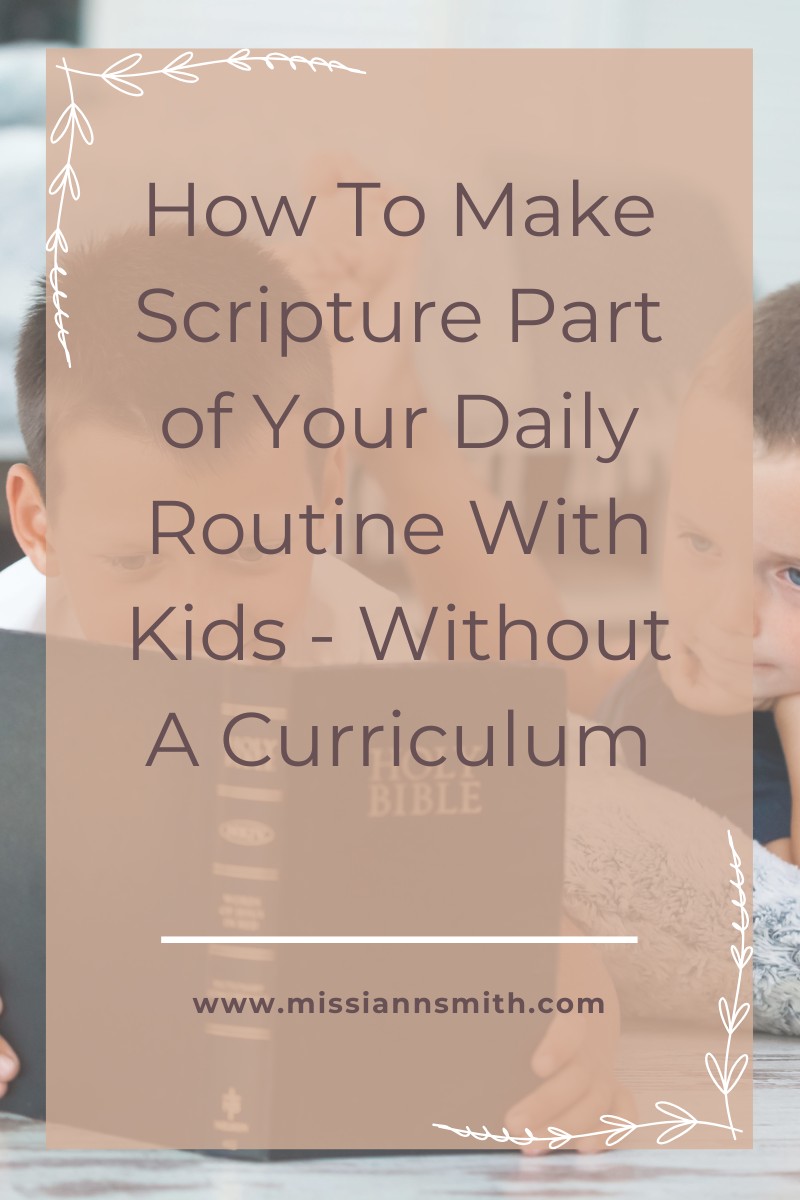
If you've ever felt guilty for not doing a full-blown family devotional every day... take the pressure off, sweet friend.
You don’t need an hour-long study or a Influencer's routine to bring the Word into your home. You just need intention.
Scripture is meant to be part of your everyday — not just your Sunday. It should be a natural outpouring of your own time with the Lord.
Let’s talk about how to make that happen, especially with little ones around.
🟣 God’s Word Is for Real Life — Not Just Quiet Time
Deuteronomy 6 gives us a picture of how Scripture is meant to shape daily life:
“You shall teach them diligently to your children, and shall talk of them when you sit in your house, and when you walk by the way, and when you lie down, and when you rise.”
— Deuteronomy 6:7 (ESV)
In other words... when you're eating breakfast, driving to practice, wiping counters, tucking kids in — THAT’S the space where Scripture belongs.
It doesn’t need to be formal. It needs to be present.
And here's a hint - if you only read devotionals, or a single "verse-of-the-day", it won't naturally occur to you to talk about God's Word at all those times.
You have to fill yourself with Scripture first before you can pour it out to your family and others.
🟣 6 Simple Ways to Bring Scripture Into Your Daily Routines
If you're like me and you love actionable, structured ideas, here are some you can try this week — no prep, no curriculum required.
1. Verse of the Week on the Fridge or Bathroom Mirror
Pick one short verse that your family can see often. Use dry-erase marker, Post-It notes, or a chalkboard. The key is visibility = familiarity.
Pick one short verse that your family can see often. Use dry-erase marker, Post-It notes, or a chalkboard. The key is visibility = familiarity.
➡️ Try Philippians 2:14 — “Do all things without grumbling or disputing.”
(Actually...this is a fun one to help them memorize, because we'd all love a little less whining, right? 😉)
2. Speak Scripture While You Correct or Redirect
Instead of just saying “be nice,” try saying:
“God’s Word says to be kind to one another” (Ephesians 4:32).
Instead of just saying “be nice,” try saying:
“God’s Word says to be kind to one another” (Ephesians 4:32).
You’re not using the Bible as a hammer — you’re simply anchoring your correction in truth.
3. Play Scripture Songs During Chores or Playtime
Music helps truth stick. A mom once told me her toddlers could quote more Scripture from worship music than anything else. And yes — it counts.
Music helps truth stick. A mom once told me her toddlers could quote more Scripture from worship music than anything else. And yes — it counts.
➡️ Check out Seeds Family Worship or Slugs & Bugs for sound theology in song.
4. Tie Verses to Routines
- Brushing teeth? Recite Proverbs 15:1.
- Before meals? Read a Psalm of thanksgiving.
- At bedtime? Whisper Psalm 4:8 or Psalm 23:1-2.
The goal isn’t performance. It’s presence.
5. Ask Simple, Curious Questions
- “What do you think God means when He says ‘love one another’?”
- “Why do you think Jesus told that story?”
These moments spark conversations that plant seeds of faith.
6. Read the Bible Out Loud While They Play
Even if they’re playing with LEGOs or dolls, read anyway.
Even if they’re playing with LEGOs or dolls, read anyway.
Isaiah 55:11 reminds us:
“So shall my word be that goes out from my mouth; it shall not return to me empty…” (ESV)
Don’t wait for perfect stillness. Just read.
Alternatively, you could also put on an app that reads the Bible out loud (I'm one of those people that doesn't particularly enjoying reading aloud, so I understand if you don't either!).
🟣 A Gentle Word for Moms Who Feel Insecure
You don’t need to be a Bible expert. You don’t need seminary-level answers. And you’re not failing if your kids roll their eyes or get wiggly during prayer.
Your consistency matters more than your polish.
Your tone matters more than your volume.
Your willingness to look for answers (rather than pretending to know everything) teaches your children how to be better and more humble students.
And your love for God’s Word? It speaks louder than a thousand rules or reminders.
🟣 Scriptures to Hold Onto as You Lead Faithfully
Here are a few Scriptures that remind us why we do this — even when no one seems to notice:
- Isaiah 40:11
“He will tend his flock like a shepherd… he will gently lead those that are with young.”
God is gentle with mothers. You can be gentle with yourself, too.
- Psalm 78:4
“We will not hide them from their children, but tell to the coming generation the glorious deeds of the Lord…”
- 2 Timothy 3:15
“…and how from childhood you have been acquainted with the sacred writings, which are able to make you wise for salvation…”
These verses are your reminder: you’re sowing eternity into your child’s everyday life.
🟣 Final Thought:
God’s Word doesn’t need to compete with your daily routines. It was meant to live inside them.
So whether your kids are toddlers, teens, or somewhere in between—start now. Say the verse. Play the music. Ask the question. Let your home be filled with truth that sticks long after your kids leave the house.
And if you haven’t already grabbed it — be sure to check out this month’s free download:
✨ 30 Scriptures to Pray Over Your Home
📩 Grab it here!
✨ 30 Scriptures to Pray Over Your Home
📩 Grab it here!
